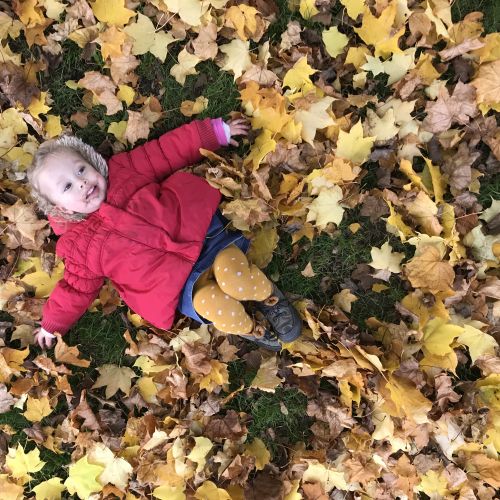Blog
Making sense of Self-regulation
Over the past few years there has been a growing interest in self- regulation and its importance in the early years. The EYFS Statutory Framework (2021) introduced self-regulation as an early learning goal as part of the Prime Area of Personal, Social and Emotional Development (PSED).
There are many sources of information and explanations readily available for practitioners and parents to find out more about this. These include the non-statutory guidance, ‘Development Matters 2021’ and ‘Birth to Five Matters 2021’. The Education Endowment Foundation ‘Early Years Evidence Store 2023’ has a section on self- regulation and executive function and also PSED.
Self-regulation is not a new term it has been the subject of interest and research for many years. Over 30 years ago Shunk and Zimmerman defined self-regulation as ‘The process whereby students activate and sustain cognitions, behaviours, and affects, which are systematically oriented toward attainment of their goals’.
Since that time many definitions and explanations have been used in research and literature in attempt to explore the meaning of self-regulation. In 2014 Burman et al identified that self-regulation has multiple meanings and identified 447 different definitions. It is no wonder that when trying to identify what we can do to support self-regulation in young children we find ourselves still needing to unpick what our own understanding is.


As mentioned previously there are plentiful sources of information at hand. Another of these is ‘Getting it Right in the Early Years Foundation Stage – A review of the evidence’ (2019)
The review was supported by 13 early years organisations. It aimed to review evidence and literature of the last 10 years since the previous EYFS Framework. In the report it was noted that ‘In educational contexts it is important to distinguish between executive functioning (EF) and the broader concept of self-regulation, as EF appears to be necessary but not sufficient in the enhancement of long-term outcomes. In addition, one of the key messages suggested was that ‘The Characteristics of Effective Teaching and Learning should have a renewed focus in recognition of their importance in relation to self-regulation and executive function. Self-regulation should not be misunderstood as being solely part of personal, social and emotional development.’
This evidence review highlights one of the most important aspects of self- regulation in the early years. That is its relationship to Executive Function. The Early Years Evidence Store (previously Early Years Toolkit) which has recently been updated with a section dedicated to ‘Self -Regulation and Executive Function’ points out that ‘self-regulation supports executive function’ and that ‘self-regulation and executive function are closely related.’ To understand what this means in relation to early child development and how children learn we need to look further afield at the growing knowledge of the developing brain and nervous system in young children.
One way of explaining the interrelated nature of self- regulation and executive function is to remember that, ‘Brains are built over time from the bottom up’ and ‘The brain is a highly interrelated organ, and its multiple functions operate in a richly coordinated fashion Emotional wellbeing and social competence provide a strong foundation for emerging cognitive abilities, and together they are the bricks and mortar that comprise the foundation of human development.’
(In Brief The Science of Early Childhood)
The more complex processes involved in learning such as those associated with EF such as Working memory, Flexible Thinking and Inhibitory control are housed in the last part of the human brain to mature. However, self- regulation is based in the oldest part of the brain at the top of the brain stem in the structure called the hypothalamus. This part of the brain develops earlier and strongly linked to the child’s experience of safety and connection with parents and other caregivers who offer calm, attuned consistent opportunities for co-regulation.
As early years practitioners we are constantly reflecting upon how we can support children’s development as lifelong learners and offer children the best possible foundations for learning and development. It is easy to see why gaining a shared understanding of self-regulation is so important but perhaps not always straight forward to achieve.
So how can we make ‘sense of ‘self-regulation’?
Stuart Shanker’s ‘Five Domains of self -regulation and ‘Five Step method’ can support us to understand why a child may become overwhelmed by stressors and how we as co- regulators can seek to support children through our own capacity to be regulated and offer co-regulation to the children we meet.
Shankers’ 5 Domains of self- regulation are, biological, emotional, cognitive, social and Prosocial. Each domain has its own stressors, which can be unique to each child. All domains interact with each other. The way we can support children is to become a ‘stress detective’ and offer co -regulation. This involves:
- Identify the stressors – reduce them
- Identify unmet need – meet them
- Identify skills needed – teach them
To find out more about self- regulation, co-regulation and Stuart Shankers’ approach to self-regulation join or watch the recorded webinar ‘When their storm meets our calm’ – self regulation and co regulation in the early years’ delivered by Julie Revels (Early Education Associate) where we will explore this further.
References:
EYFS 2024 https://www.gov.uk/government/publications/early-years-foundation-stage-framework--2
Birth to 5 Matters
https://birthto5matters.org.uk/
Development Matters
https://www.gov.uk/government/publications/early-years-foundation-stage-framework--2
Schunk, D. H. and Zimmerman, B. J. (1994). Self- regulation of learning and performance: Issues and educational applications. Hillsdale, NJ: Lawrence Erlbaum Associates. Cited in Early Education Journal No 80 Autumn 2016
Education Endowment Foundation. (2023) Early Years Evidence Store. (Accessed Online 06/09/24) https://educationendowmentfoundation.org.uk/support-for-schools/evidence-for-the-early-years/early-years-evidence-store
Burman, J.T, Green, C, D, Shanker, S. (2015) On the Meanings of Self-Regulation:
Digital Humanities in Service of Conceptual Clarity Child Development Journal Vol 86 No 5
Cited in
Early Education – Getting it right in the Early Years Foundation Stage- a review of the evidence (2019)
https://www.early-education.org.uk/news/getting_it_right_in_the_eyfs
In Brief ‘The Science of Early Childhood Development’ Harvard Center on the developing Child
What is self -regulation Really -Part 1
https://self-reg.ca/what-is-self-regulation-really-shared-understandings-and-language-matter/
Stuart Shanker The Mehrit Centre
 |
Julie Revels Independent Consultant in the Early Years
|
